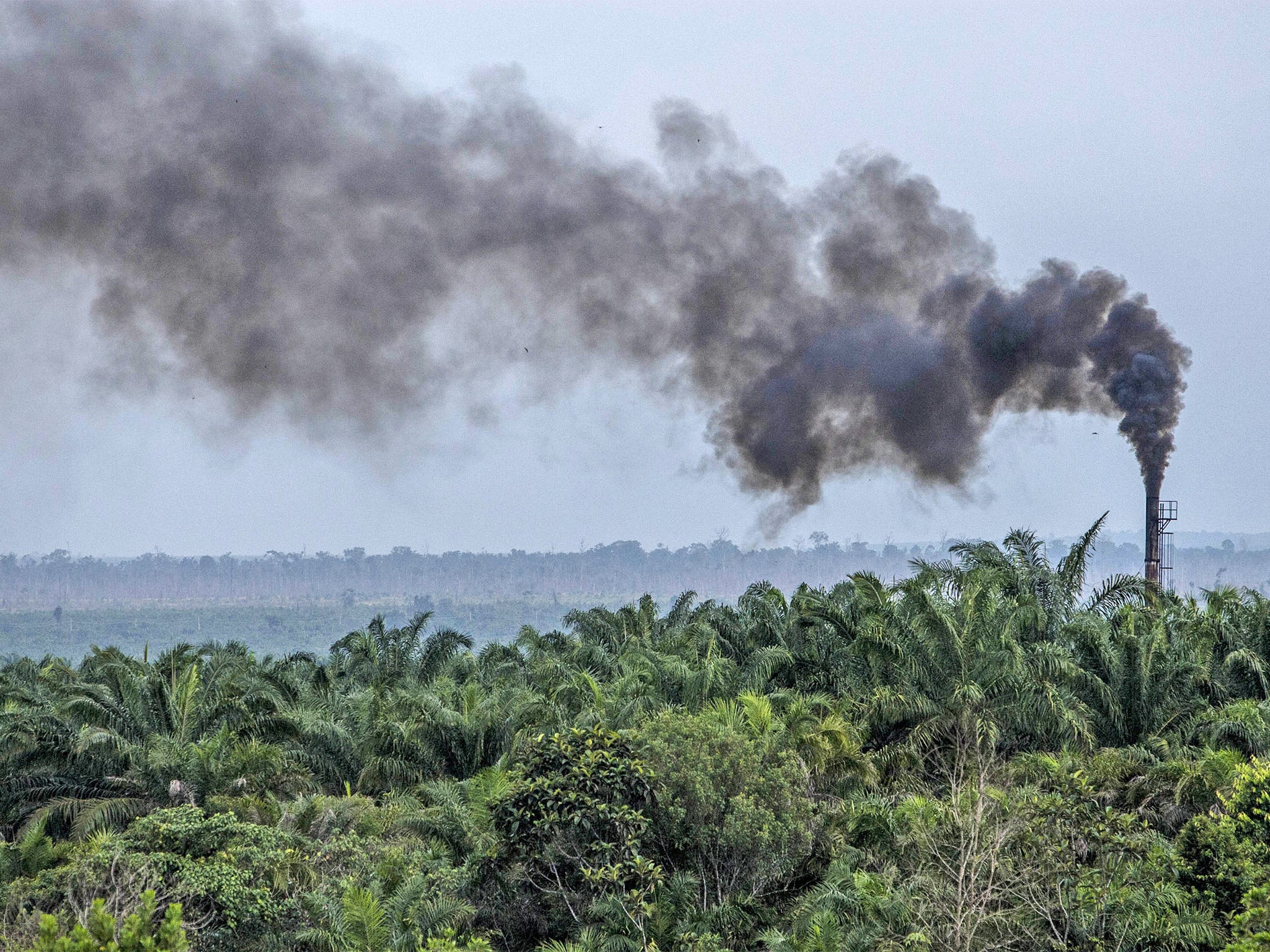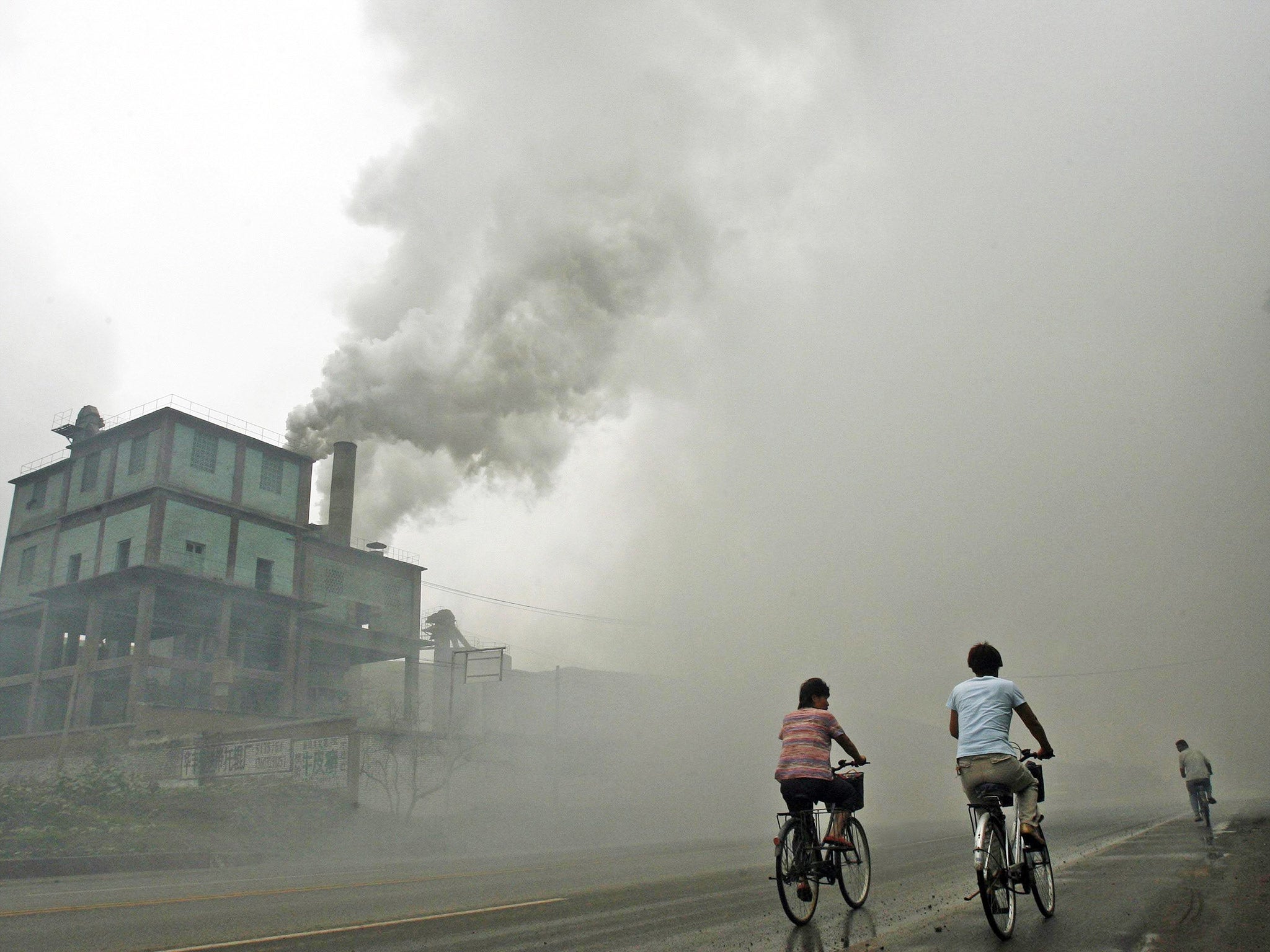Carbon dioxide accumulates as seas and forests struggle to absorb

Carbon dioxide is being accumulated in the atmosphere at the fastest rate since records began, as scientists warn that the oceans and forests may have absorbed so much CO2 that their crucial function as “carbon sinks” is now severely threatened.
The jump in atmospheric CO2 is partly the result of rising carbon emissions as the world burns ever-more fossil fuels, according to the latest World Meteorological Organisation report, which finds the concentration of carbon increased by nearly three parts per million (ppm) to 396ppm last year.
But, crucially, preliminary data in the report indicates that the jump could also be attributed to “reduced CO2 uptake by the Earth’s biosphere” – the first time the effectiveness of the world’s great carbon sinks has been scientifically called into question.
Scientists said they were puzzled and extremely concerned by prospect of reduced absorption of the world’s oceans and plants, which they cannot explain and which threatens to accelerate the build-up of heat-trapping greenhouse gases in the atmosphere if the trend continues.

“That carbon dioxide concentrations continued to surge upwards last year is worrying news,” said Professor Dave Reay, of the University of Edinburgh.
“Of particular concern is the indication that carbon storage in the world’s forests and oceans may be faltering. So far these ‘carbon sinks’ have been locking away almost half of all the carbon dioxide we emit,” Professor Reay added.
“If they begin to fail in the face of further warming then our chances of avoiding dangerous climate change become very slim indeed.”
The plants and the oceans each typically absorb about a quarter of humanity’s CO2 emissions every year, with the other half going into the atmosphere, where it can remain for hundreds of years.
The last time there was a reduction in the biosphere’s ability to absorb carbon was in 1998, a year in which extensive forest fires and dry weather killed off lots of plants, dealing a blow to the world’s carbon sink.
But Dr Oksana Tarasova, chief of the atmospheric research division at the WMO, said this time it is much more worrying because there have been no obvious impacts on the biosphere this year.
“This problem is very serious. It could be that the biosphere is already at its limit, or it may be close to reaching it. Or it may be that it just becomes less effective at absorbing carbon. But it’s still very concerning,” said Dr Tarasova.

The worst-case scenario in which the carbon sink ceased to function at all would double the rate at which CO2 emissions accumulate in the atmosphere, significantly increasing the fallout of climate change, such as storms, droughts and temperature increases, Dr Tarasova said.
The latest WMO survey packed a second environmental punch – revealing that the oceans are currently acidifying at a rate that is unprecedented in the past 300 million years.
This is because they are absorbing about 4kg of carbon dioxide for every person on the planet, the report says.
The WMO’s findings intensified calls for co-ordinated global action to limit global warming to 2C, beyond which its consequences become increasingly devastating.
“We are running out of time. Past, present and future CO2 emissions will have a cumulative impact on both global warming and ocean acidification. The law of physics are non-negotiable,” said the WMO’s secretary-general Michel Jarraud. He added that, rather than rising, fossil fuel and other emissions badly need to come down.
“We have the knowledge and we have the tools for action to try to keep temperature increases within 2C to give our planet a chance and to give our children and grandchildren a future. Pleading ignorance can no longer be an excuse for not acting,” he said.
The total concentration of heat-trapping greenhouse gases jumped to a record 479ppm in 2013, when methane and nitrous oxide is included.
Plants and oceans: The carbon savers
A carbon sink is anything that removes carbon dioxide (CO2) from the atmosphere and stores it, in a process known as carbon sequestration. There are two major carbon sinks in the world – plants and oceans – and each has historically sucked about a quarter of humanity’s CO2 emissions out of the atmosphere and stored it.
Leaves absorb carbon dioxide during photosynthesis, where the sun’s energy is used to separate the oxygen which is released back into the atmosphere and the carbon, which it stores. Half of the tree is made up of carbon.
The ocean absorbs CO2 in diffusion, which is essentially an attempt to reach equilibrium with the atmosphere. Sea life then extracts the carbon and oxygen from the water and combines them with calcium to produce calcium carbonate.
Join our commenting forum
Join thought-provoking conversations, follow other Independent readers and see their replies
Comments
Bookmark popover
Removed from bookmarks